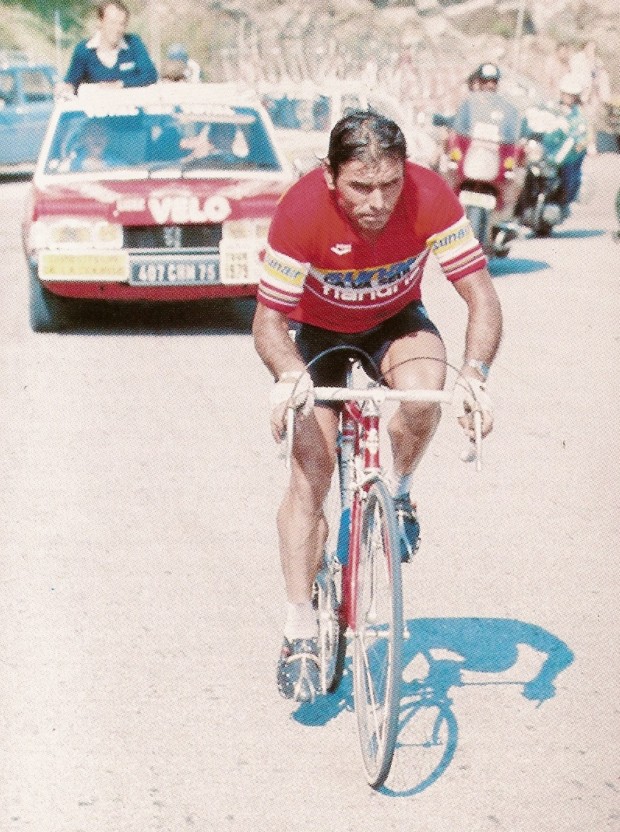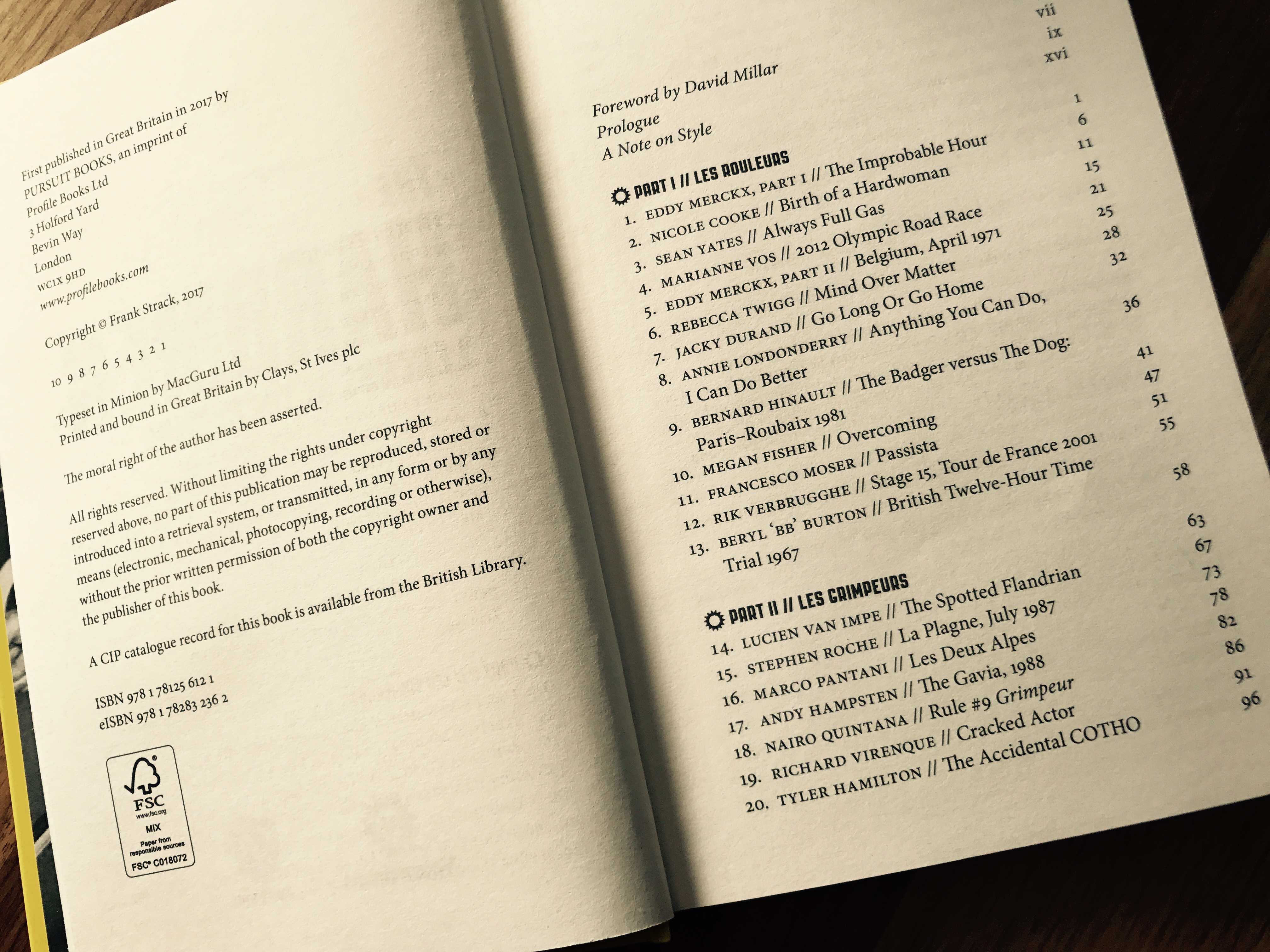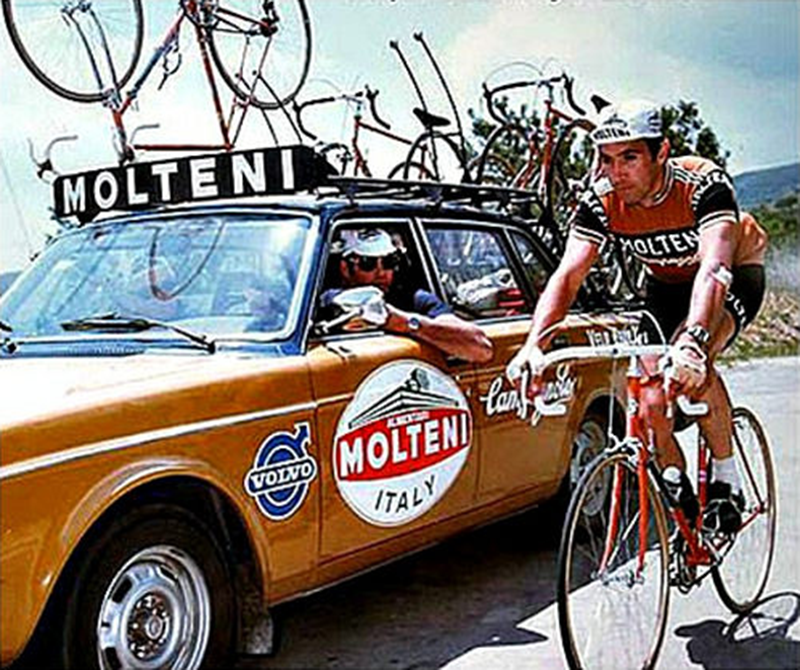Guest Article: Joaquim Agostinho

Who learns of their cycling potential while in the military, serving in Africa? @wiscot is once again serving up some great cycling history in his post about Joaquim “The Bull” Agostinho. As dangerous as cycling seems, surprisingly few professionals get killed racing or training. Agostinho was one of the unlucky few. He was a man for the Tour de France and the Tour is almost upon us so let us reflect on a man who loved the Tour and died racing his bike.
Yours in Cycling, Gianni
Teams are comprised of many components from the mechanical to the human. Bikes, trucks, soigneurs, mechanics, cooks all exist to serve one thing: the riders. The latter are the most visible part of a team and the one that gives the team its personality and insinuates its way into the hearts of the public. Some teams just have a certain aura that others lack. In recent memory the TI Raleigh, Renault-Elf, La Vie Claire, Sky and Omega Pharma are teams that have dominated the sport. (I could cite US Postal, but personally I never warmed to them). However, one team that arguably outshines all these is the various iterations of the Flandria team. Has any team in cycling history ever had in its employ so many stars and bona fide hard men? I can’t think of one. Who wore the iconic red kit and rode the matching bikes? Briek Schotte, Freddy Maertens, Joop Zoetemelk, Marc DeMayer, Roger deVlaeminck, Rik van Looy, Sean Kelly, Herman van Springel, Peter Post, Walter Godefroot and last, but not least, Joaquim Agostinho.
If one name sticks out, it should. All are northern Europeans except Agostinho who was from Torres Vedras in warm, sunny, temperate Portugal. Don’t let the place of origin fool you though, this short, powerful rider was as hard as they come and shockingly deceptive in appearance and ability. Don’t let the wins of Ruiz Costa and Chris Horner lead you believe that Portugal and old age are currently in vogue when it comes to top podium steps: Agostinho stood highest no less than 107 times in his career. Even that simple number is misleading. This was not some young phenom who started wining early. No, Agostinho turned pro at 27 and died (as a result of a racing accident) at 42. A fifteen year career you say? Nope, he retired in 1982 for a year to look after his farm after a fall had wrecked his confidence, yet he came back to win again.
Those impressive victories are a testament to a rider of superb consistency and mental fortitude but also an attitude that saw the bike as a job, as a way of earning a better living than might otherwise have been available. (His one-time teammate Sean Kelly and he would have had much in common: a love of working the land and both used cycling as a way to fame and fortune, but in Agostinho’s case it was a way to secure a farm, not escape it.) Perhaps part of the reason Agostinho saw cycling as a job was that he knew any such career could be short, but that he had other life experiences that put things into perspective. From 1961-74 the little-known Portugese Colonial War raged in the former colonies of Angola and Mozambique. Agostino had obligatory military service to perform and fought in both places for three years. It was this unlikely scenario that propelled him towards the bike as a living. Jean-Pierre Douçot, who became his mechanic as a professional, said: “It was his captain during the war in Mozambique who discovered him. When he carried messages on a heavy bike, he took two hours to ride 50km when the others took five.”
Agostinho was feared by many – none more so than the Prophet himself. Merckx knew that he had to keep a sharp eye on the stocky, swarthy Portugese man; once he went on the attack, you’d better respond or wait until the finish to see him. In 1969, when he and Agostinho made their Tour debuts, Merckx said that the wee man from Torres Vedras was the only one who worried him. He was justified in doing so: Agostinho rode the Tour 12 times, finishing eleven, made the top 10 eight times and stood on the podium twice.
Raphael Geminiani, no slough in dissecting a rider’s potential and character remarked of Agostinho:
“He didn’t know his own strength. He was a ball of muscles of out-of-the-ordinary power. He was built like a cast-iron founder. Having come to cycling fairly late, he had trouble integrating with it. It’s a shame he didn’t want to dedicate himself 100 per cent to being a professional cyclist. Now and then he showed his very great physical powers, but no more often than that. He didn’t want to do more. The peloton scared him, which is why he fell so often. More than that, Tinho was never aggressive enough to impose himself totally. He had a legendary kindness and his only ambition was to be good, gentle Tinho. If he’d been ambitious, he would easily have written his name into the records of the Tour de France.”
Writing in International Cycle Sport in 1984, the year Agostinho died, Pierre Martin wrote of the rider’s frustrating inconsistency and unconventional attitude that Geminiani also addressed: the fact that cycling was a means to an end rather than the be-all-and-end-all of life.
“He loved the Tour de France. There were few other races which he took seriously, indeed he raced relatively little during an average season – enough to pay for and maintain life’s dream, but no more. On the roads of the Tour, nobody ever knew when he would suddenly burst into action. He might be quiet for days on end, when suddenly the racing fever would grip him, not always in the mountains, and away he went. When he went, those with serious ambitions went with him, knowing that, otherwise, they would see him no more until the end of the stage. He didn’t take cycling too seriously. It had brought him wealth and security, had allowed him to buy and stock a large farm about 20 miles from Lisbon. The farm and his family were his life; cycling was his hobby. When he was riding the Tour d’Indre-et-Loire once, news reached him that 20 cows had been stolen. Off he went, in mid-race, back to Portugal to organize a posse to hunt the cattle, chartering a light plane for himself to direct the search.”
If Agostinho should be remembered for a ride that exemplified his unconventional abilities, it’s his win at Alpe d’Huez in 1979. Built like a sprinter, he was paradoxically a superb climber, using his natural strength and power. Unbelievably, the tour that year did L’Alpe twice on consecutive days: first up was 118.5kms won by Joop Zoetemelk in the green jersey making a last ditch attempt to defeat Bernard Hinault. The second day was 166.5 kms and that became Agostinho’s time to shine. On the stage he rode away from the bunch, negotiating each hairpin with grim-faced determination to win by 3:40.
Agostinho died tragically in 1984 at the tour of the Algarve. Near the end of a stage a dog was loose on the course and he hit it, crashing badly on his head. He got up, remounted and finished the stage; after all, he was leading the race. Eventually it was discovered he had fractured his skull and went into a coma, never to regain consciousness. His funeral attracted thousands.
Cycling, like most sports has changed dramatically over the years. Most riders today have come up through the ranks as cyclists and many have known no other occupation. Joaquim Agostinho was Portugese, but his two years with Flandria and their fearsome reputation as a team for hard men was a natural fit for him. For Velominati, professional bike riders are simultaneously people we can admire and try to emulate, but know deep down that we are mere mortals to their god-like status. Agostinho is someone I feel we can identify with: for all our love of the bike, we have other aspects of our lives that sometimes””and often””take precedence. We ride hard when we can and want to, but I think we know that if our cattle got loose, we’d drop everything to get them back.


Agostinho reverence — thanx
A-merckx. My education of cycling’s rich history continues. Thanks.
Brilliant, and moving. Thank you @Wiscot, for furthering my education.
Every day is a school day, cheers Wiscot.
Truly one of the hardmen and typical of the cyclist: remount the bike toute suite post crash, regardless of condition. Flandria was a great team, just reference the site http://www.flandriacafe.com t
Nice article thanks.
Excellent, thanks @wiscot.
Great article.
Great history, as usual, @wiscot. Thanks,
Thanks for the kind comments guys. I love writing this stuff. The picture was carefully chosen: a man at work, doing his job diligently and seriously. No histronics, probably thinking how many cows he can buy with his winnings.
@wiscot – Chapeau! Great article; I am always learning here. The bike is an important part of my life and my reflections during my rides remind me constantly how precious everything else is.
Lotto Belisol are very obviously riffing on the classic Flandria jerseys and bikes this year.
They really rather need to start matching it with hardman results.
@wiscot
Where do you find this stuff? Its crazy incredible.
I remember Tinho’s win on Alpe D’Huez, because in those days, we had to ride into town, buy a copy of yesterday’s New York Times and find out who won. Our universal 18 year-old response at the time was “WOW!”.
Good work wiscot.
Well done wiscot! Tinho, I never knew you…til now.
Nice bit of history! Thanks!
Top drawer @wiscot. Just another reason that I love this site
@gilly, thanks for bumping this back into view. Not sure how I missed it the first time.
@wiscot, history addict that I am, I always look forward to your contributions. Well done – again.
I am from Torres Vedras, this man here is a legend! People often talk about his infinite strength. We have a statue of him and every year there is a race in his honour. His house has a gate in a shape of a bike so everybody knows where the legend lived. Thanks, great article!